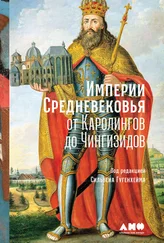James Clarke Holt, «The End of the Anglo-Norman Realm», Proceeding of the British Academy, 61, 1975, pp. 223–265, rééd. Magna Carta and Medieval Government, Londres, Hambledon Press, 1985, ici p. 40; John Le Patourel, «The Plantagenet Dominion», History, 50, janvier 1965, pp. 289–308, rééd. dans Feudal Empire, Norman and Plantagenet, Londres, Hambledon Press, 1984, chap. VIII; Wilfrid L. Warren, Henry II, Londres, Eyre Methuen, 1973, p. 561; Robert-Henri Bautier, «„Empire Plantagenêt“ ou „Espace Plantagenêt“? Y eut-il une civilisation du monde Plantagenêt?», Cahiers de civilisation médiévale [ensuite CCM], 29, 1986, pp. 139–147.
John Gillingham, The Angevin Empire, Londres, Arnold, 1984, p. 3; M. Aurell, L’Empire des Plantagenêt, 1154–1224, op. cit.; Fanny Madeline, Les Plantagenêts et leur empire. Construire un territoire politique, Rennes, PUR, 2014.
По этому вопросу в историографии также идут дискуссии. Вопреки классической идее о единстве (Charles Warren Hollister, «Normandy, France and the Anglo-norman regnum», Speculum, 51, 1976, pp. 202–242, или John Le Patourel, The Norman Empire, Oxford, Clarendon Press, 1976), недавно возникло направление, подчеркивающее различия между составными частями: David Bates, «Normandy and England after 1066», English Historical Review, 104, 1989, pp. 851–876; Judith Green, «Unity and Disunity in the Anglo-norman State», Historical Research, 63, 1989, pp. 115–134; David Crouch, «Normans and Anglo-Normans: a Divided Aristocracy?», dans David Bates et Anne Curry (éd.), England and Normandy in the Middle Ages, Londres, Rio Grande, The Hambledon Press, 1994, pp. 51–67.
Blanche Nef. — Прим. пер.
В условиях гражданской войны Жоффруа Красивый уступил все свои владения Генриху с условием, что Анжу в дальнейшем перейдет его брату Жоффруа, чего так никогда и не произошло. Guillaume de Neubourg, Historia Rerum Anglicarum, dans Chronicle of the Reigns of Stephen, Henry II and Richard I, vol. I, éd. R. Howlett, Londres, 1884, pp. 112–114.
Judith A. Everard, Brittany and the Angevins: Province and Empire (1158–1203), Cambridge, Cambridge University Press, 2000.
Robin Frame, The Political Development of the British Isles, 1100–1400, Oxford, Clarendon Press, 1990.
Территориальная единица на границе того или иного государства. — Прим. пер.
Marie Therese Flanagan, Irish Society, Anglo-Norman Settlers, Angevin Kingship. Interactions in Ireland in the Late 12th Century, Oxford, Clarendon Press, 1983.
Parage ( устар. «род», «происхождение») — система, при которой лен делился между наследниками, но землевладельцем становился старший в роду. — Прим. пер.
Giraud de Barri, De principis instructione Liber, Giraldi Cambrensis Opera, éd. G. F. Warner, vol. 8, Londres, 1891, p. 214.
Подробный разбор его перемещений см.: J. A. Everard dans l’introduction des Acta Plantagenets ( http://www.britac.ac.uk/arp/acta.cfm) et les cartes réalisées par F. Madeline, Les Plantagenêts et leur empire, op. cit., pp. 271–273.
Pierre de Blois, lettre 14, P. L. 207, col. 44.
Свита Эллекена — то же самое, что Дикая Охота. Имя Эллекен могло происходить от имени очень древнего бретонского короля Херлы (Hellequin). — Прим. ред .
Laurence Harf-Lancner, «L’enfer de la cour: la cour d’Henri II Plantagenêt et la Mesnie Hellequin», dans Philippe Contamine (dir.), L’État et les aristocraties, France, Angleterre, Écosse, XII e—XVII esiècle, Paris, Presses de l’École normale supérieure, 1989, pp. 27–50.
Gautier Map, De nugis curialium, éd. C. N. L. Brooke et R. A. B. Mynors, Oxford, Clarendon Press, 1983, I, 11.
Казначейство. — Прим. пер.
Charles Coulson, «Structural Symbolism in Medieval Castle Architecture», Journal of the British Archeological Association, 132, 1979, pp. 72–90.
F. Madeline, Les Plantagenêts et leur empire, op. cit., p. 311; Marie-Pierre Baudry, Les Forti cations des Plantagenêts en Poitou, 1154–1242, Paris, Éditions du CTHS, 2001.
Guillaume Le Breton, Philippide, Œuvres de Rigord et de Guillaume le Breton, éd. H.-F. Delaborde, Paris, 1885, VII, v. 41–42.
Robert de Torigny, Chronica, éd. R. Howlett, Londres, 1889, p. 277.
Historia Gaufredi ducis Normannorum et comitis Andegavorum, Chroniques des comtes d’Anjou et des seigneurs d’Amboise, éd. R. Poupardin et L. Halphen, Paris, Picard, 1913, p. 224.
Первый документ касается частного права и запрещает кредиторам изымать имущество у арендаторов ( tenants ) их должников, если только они не являются поручителями. Второй документ представляет собой добавления к списку обязанностей вассалов и коммун; положение уточняет характер военного снаряжения подданных на службе у правителя в соответствии с социальным статусом и уровнем достатка.
Ассиза посвящена наследованию рыцарских фьефов в Бретани. Издание см. в: J. A. Everard, Brittany and the Angevins: Province and Empire (1158–1203), op. cit., appendice 1, pp. 182–203. Второй документ говорит о том, что герцогская власть служит гарантом мира в регионе. Единственная копия этого источника сохранилась в составе картулярия из церкви Сен-Сёрен в Бордо, составленного в середине XIII в. (Frédéric Boutoulle, Le Duc et la Société. Pouvoirs et groupes sociaux dans la Gascogne bordelaise au XII esiècle, Bordeaux, Ausonius, 2007, pp. 254–256.)
J. Gillingham, The Angevin Empire, op. cit., p. 81.
Jean-Justin Monlezun, Histoire de la Gascogne, Auch, J. A. Portes, 1846–1849, vol. 2, pp. 220–221.
Claude Gauvard, «De la requête à l’enquête. Réponse rhétorique ou réalité politique? Le cas du royaume de France à la fin du Moyen Âge», L’Enquête au Moyen Âge, Rome, École française de Rome, 2008, pp. 429–458.
Читать дальше
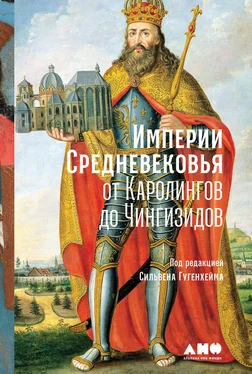
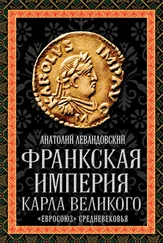


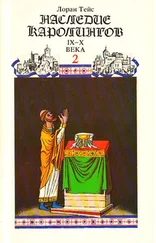


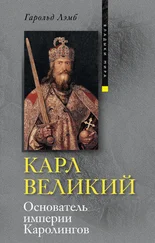
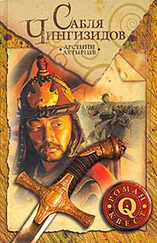
![Филипп Доллингер - Ганзейский союз [Торговая империя Средневековья от Лондона и Брюгге до Пскова и Новгорода]](/books/401467/filipp-dollinger-ganzejskij-soyuz-torgovaya-imperiya-thumb.webp)
![Умберто Эко - С окраин империи. Хроники нового средневековья [litres]](/books/438322/umberto-eko-s-okrain-imperii-hroniki-novogo-sredn-thumb.webp)

